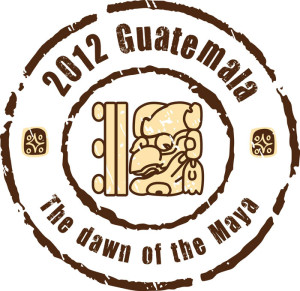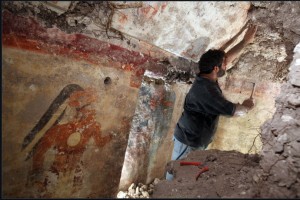Latest Discovery At Xultún
The Xultún find is the first place that all of the cycles have been found tied mathematically together in one place, representing a calendar that stretches more than 7,000 years into the future. —BBC News reports
Written by. Annabella Cifuentes.
The ancient Mayan megacity of Xultún (200-900 AD) is the site of the latest and greatest discovery by archaeologists—the oldest-known Mayan astronomical tables, predating other sites by several centuries.
The tabulated numbers chart the motion of the moon and seem to relate to the orbits of Mars and Venus. The Mayan calendar “end of the world” theory can now be put to rest. The numbers do not predict the world will end in December 2012.
The structure that houses both art and astronomical calculations is topped by a vaulted ceiling; on the floor sits a stone bench, suggesting to archaeologists that the room was a meeting place.
William Saturno, a Boston University archaeologist, in a statement released by the National Geographic Society, reported, “For the first time we get to see what may be actual records kept by a scribe, whose job was to be the official record keeper of a Maya community. It’s like an episode of TV’s Big Bang Theory, a geek math problem and they’re painting on the wall. They seem to be using it like a blackboard.”
Archaeologist William Saturno of Boston University carefully uncovers art and writings left by the Maya some 1,200 years ago. The art and other symbols on the walls may have been records kept by a scribe, Saturno theorizes. Saturno’s excavation and documentation of the house were supported by the National Geographic Society.
Photo by Tyrone Turner © 2012 National Geographic
“We’ve never seen anything like it,” said David Stuart, professor of Mesoamerican art and writing at the University of Texas at Austin who deciphered the glyphs.
Rediscoveries within the ruins of Xultún
1920s: The Carnegie Institution of Washington spearheaded expeditions to Xultún and picked Sylvanus Morley, respected archaeologist and epigrapher, to lead the group. It went on to discover and register most of the inscriptions at the site.
1970s: Archaeological inquiry resumed at Xultún; the Corpus of Maya Hieroglyphic Inscription Project recovered and recorded more monuments.

2008: Archaeological investigations and excavations resumed under the direction of William Saturno, Boston University, and David Stuart, University of Texas at Austin, with support from the National Geographic Society.
2012: The team uncovers the oldest-known Mayan astronomical tables, dating to the ninth century A.D.

Fascinating !